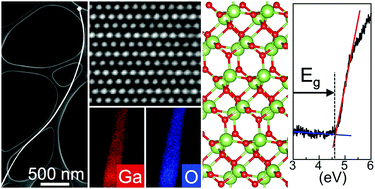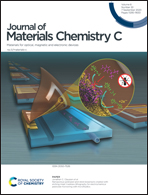Abstract
Gallium oxide (Ga2O3) and its most stable modification, monoclinic β-Ga2O3, is emerging as a primary material for power electronic devices, gas sensors and optical devices due to a high breakdown voltage, large bandgap, and optical transparency combined with electrical conductivity. Growth of β-Ga2O3 is challenging and most methods require very high temperatures. Nanowires of β-Ga2O3 have been investigated extensively as they might be advantageous for devices such as nanowire field effect transistors, and gas sensors benefiting from a large surface to volume ratio, among others. Here, we report a synthesis approach using a sulfide precursor (Ga2S3), which requires relatively low substrate temperatures and short growth times to produce high-quality single crystalline β-Ga2O3 nanowires in high yields. Even though Au- or Ag-rich nanoparticles are invariably observed at the nanowire tips, they merely serve as nucleation seeds while the nanowire growth proceeds via supply and local oxidation of gallium at the substrate interface. Absorption and cathodoluminescence spectroscopy on individual nanowires confirms a wide bandgap of 4.63 eV and strong luminescence with a maximum ∼2.7 eV. Determining the growth process, morphology, composition and optoelectronic properties on the single nanowire level is key to further application of the β-Ga2O3 nanowires in electronic devices.



 Please wait while we load your content...
Please wait while we load your content...